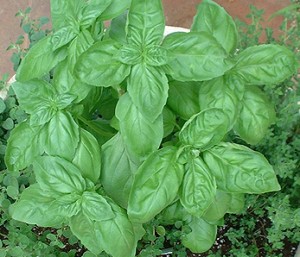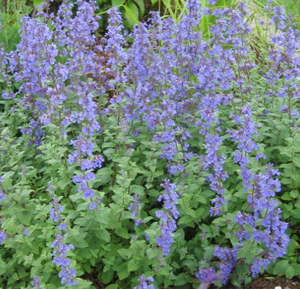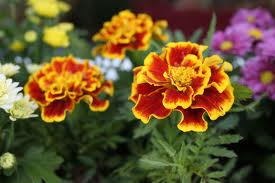One of the great things about gardening is that in some way your garden can take care of itself. Now, that’s not endorsing abandoning garden chores completely, but there are a few things that you can do to make your work a little easier. One of these things is to select plants for your garden that will help control insect pests.
Certain plants contain properties that either invite beneficial insects or repel harmful insects. Beneficial insects prey on pests that cause damage in the garden. Ladybugs and praying mantis are good examples of beneficial bugs.
Using plants for pest control not only cuts down on your workload, but it also reduces the amount of insecticides that you use in your garden. And fewer insecticides means more good bugs, which in turn means help in controlling bad bugs.
Remember that what works in one garden may not work in another. Every garden is different with its own microclimate, soil type, and pest control issues. It is important to experiment to find out what works best for your situation. With this thought in mind, it also helps to choose plants that are native to your area. This way beneficial insects will already know what to look for.
Artemisia: This plant produces a strong antiseptic, although not unpleasant aroma that repels most insects. Planted in drifts it can also deter small animals. One popular variety is ‘Powis Castle.’ Probably best not to plant in vegetable gardens because it produces a botanical poison.
 Basil: The oils in basil are said to repel thrips, flies and mosquitoes. Plant basil alongside any tomato plants for larger, tastier tomatoes.
Basil: The oils in basil are said to repel thrips, flies and mosquitoes. Plant basil alongside any tomato plants for larger, tastier tomatoes.
Bee Balm: This plant attracts bees to the garden. It is another plant that you can grow with your tomatoes.
Borage: This plant is a real workhorse in the garden. It repels tomato hornworms and cabbage worms and attracts beneficial bees and wasps. Borage also adds trace elements to the soil. This is an annual, but readily come back each year from seed.
Catnip: This plant repels just about everything, except for cats of course! Use it to keep  away flea beetles, aphids, Japanese beetles, squash bugs, ants, and weevils. Use sachets of dried catnip to deter ants from invading your kitchen. A favorite variety of catnip is ‘Six Hills Giant’ because of its proliferation of sky blue blooms.
away flea beetles, aphids, Japanese beetles, squash bugs, ants, and weevils. Use sachets of dried catnip to deter ants from invading your kitchen. A favorite variety of catnip is ‘Six Hills Giant’ because of its proliferation of sky blue blooms.
Chives: are great herbs. Not only do they have great flavor, but their grassy foliage and round heads also add so much interest to any garden. You can plant chives to repel Japanese beetles and carrot rust flies. It has been said that chives will help prevent scab when planted among apple trees.
Chrysanthemums: When you do use an insecticide, use one made from chrysanthemums called pyrethrum. This all-natural pesticide can help control things like roaches, ticks, silverfish, lice, fleas, bedbugs, and ants. In the garden white flowering chrysanthemums are said to drive away Japanese beetles.
Garlic: A lot can be said about garlic. It’s really great stuff. In addition to its great taste and health benefits, garlic planted near roses repels aphids. It also deters codling moths, Japanese beetles, root maggots, snails, and carrot root fly.
Marigolds: The marigold is probably the most well known plant for repelling insects. French marigolds repel whiteflies and kill bad nematodes. Mexican marigolds are said to  offend a host of destructive insects and wild rabbits as well. If you choose marigolds for your garden they must be scented to work as a repellent. And while this plant drives away many bad bugs, it also attracts spider mites and snails.
offend a host of destructive insects and wild rabbits as well. If you choose marigolds for your garden they must be scented to work as a repellent. And while this plant drives away many bad bugs, it also attracts spider mites and snails.
Nasturtiums: Plant nasturtiums with your tomatoes and cucumbers as a way to fight off wooly aphids, whiteflies, squash bugs, and cucumber beetles. The flowers, especially the yellow blooming varieties, act as a trap for aphids.
So, let some of these plants make your garden more interesting and share the work of pest control and of attracting pollinators to your garden.


